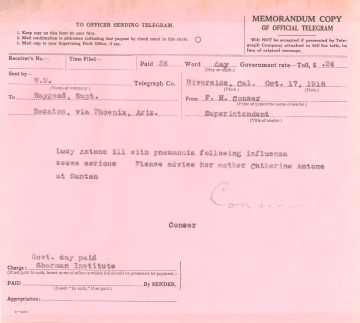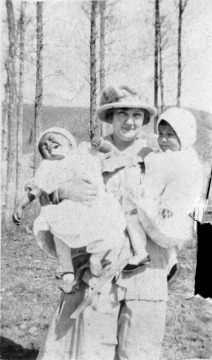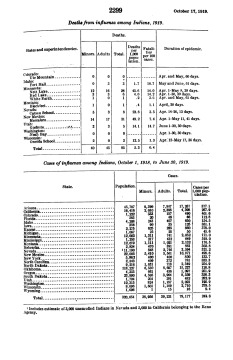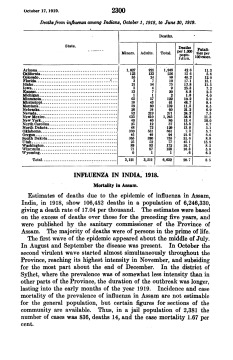1918–19: ‘Spanish Influenza’ claims millions of lives
American Indians and Alaska Natives are among the tens of millions who die in the Spanish Influenza pandemic of 1918. Those living in close quarters, including students in government-run boarding schools and hospitals, are especially hard hit. Native peoples in villages across the U.S., including the territories of Hawai‘i and Alaska, sustain staggering death rates. Some communities lose almost all of their residents.
In November at the Iñupiat village of Brevig Mission, Alaska, 72 of the 80 Iñupiat residents die of Spanish Influenza in five days. The territorial government sends gold miners from Nome to dig a grave for the victims. The miners shoot steam into the permafrost on a hillside, melting an area 6 feet deep, 12 feet wide, and 25 feet long for the mass grave.
- Theme
- Epidemics
- Region
- Arctic, California, Great Basin, Great Plains, Hawai‘i, Northeast, Northwest Coast, Plateau, Southeast, Southwest, Subarctic
In a telegram paid for by the Sherman Institute, an Indian boarding school located in Riverside, California, Superintendent F.W. Conser writes to the superintendent of the Pima Agency regarding the condition of student, asking that the young girl's mother be notified.
Courtesy National Archives and Records Administration at Riverside, Perris, CA
Fern Rose and two children whose parents died during the influenza epidemic, ca. 1918. Rose was the schoolteacher at Saint Marks Mission in Nenana, Alaska at the time of the outbreak.
Courtesy Elmer E. Rasmuson Library, University of Alaska Fairbanks
Cases of influenza and deaths among Indians in the U.S. from October 1, 1918 to June 30, 1919
Courtesy National Library of Medicine
Cases of influenza and deaths among Indians in the U.S. from October 1, 1918 to June 30, 1919
Courtesy National Library of Medicine



